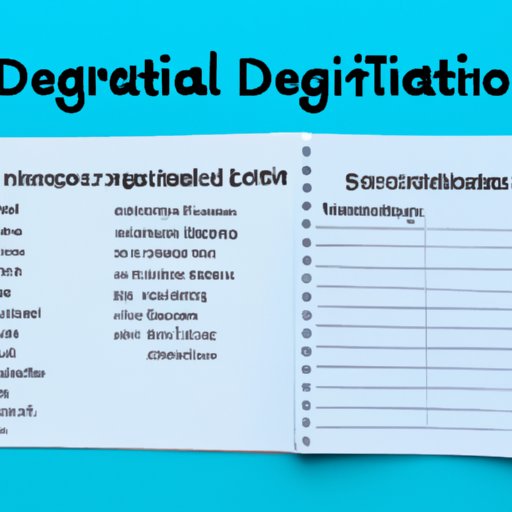Introduction
An elimination diet is a dietary approach that involves eliminating certain food groups or ingredients from your diet for a period of time in order to identify any food sensitivities. This type of diet can help you pinpoint which foods may be causing digestive issues, skin problems, fatigue, and other symptoms. It can also provide insight into what foods make you feel your best.
Overview of Potential Benefits
According to a study published in Frontiers in Pediatrics, an elimination diet can have a number of potential benefits, including improved digestion, reduced inflammation, better sleep, and improved energy levels. Additionally, it can help you identify any food sensitivities or intolerances, as well as any nutrient deficiencies.
Steps of an Elimination Diet
In order to get the most out of an elimination diet, it’s important to follow a few key steps. Here’s an overview of what to expect:

What to Eliminate and Why
The first step in an elimination diet is to determine which foods to eliminate. Common culprits include dairy, gluten, soy, eggs, nuts, nightshades, and corn. These are all common allergens that may cause digestive distress or other symptoms. You should also avoid processed foods, added sugars, and artificial sweeteners.

Meal Ideas for Those on an Elimination Diet
Once you’ve identified which foods to eliminate, you’ll need to come up with meal ideas that fit within the parameters of your elimination diet. Focus on whole, unprocessed foods such as fresh fruits and vegetables, lean proteins, and healthy fats. Some ideas include grilled salmon with roasted vegetables, quinoa bowls with steamed vegetables, and stir-fries with brown rice.

Coping with Cravings During an Elimination Diet
It’s normal to experience cravings when eliminating certain foods from your diet. To help manage these cravings, try to focus on adding nutrient-dense foods to your meals. Eating plenty of fruits and vegetables can help you feel full and satisfied while still sticking to your elimination diet. Additionally, it’s important to stay hydrated and get plenty of sleep to help reduce cravings.
Reintroducing Foods
After a few weeks on an elimination diet, it’s time to start reintroducing the foods you’ve eliminated. Start by introducing one food group at a time and take note of any changes you may experience after eating that food. If you don’t notice any changes, add another food group. If you do notice changes, stop eating that food and wait until your symptoms subside before moving on to the next food group.
Tracking Progress
It’s important to track your progress while on an elimination diet. This will help you identify any patterns between your diet and your symptoms. Keep a journal and write down what you eat each day, as well as any symptoms you may experience. Additionally, take note of any improvements you may experience as a result of the elimination diet.
Conclusion
An elimination diet can be a useful tool for identifying food sensitivities and intolerances. It can also help you pinpoint which foods make you feel your best. By following the steps outlined above, you can ensure that you get the most out of your elimination diet. With some patience and dedication, you can start feeling your best in no time.
(Note: Is this article not meeting your expectations? Do you have knowledge or insights to share? Unlock new opportunities and expand your reach by joining our authors team. Click Registration to join us and share your expertise with our readers.)
